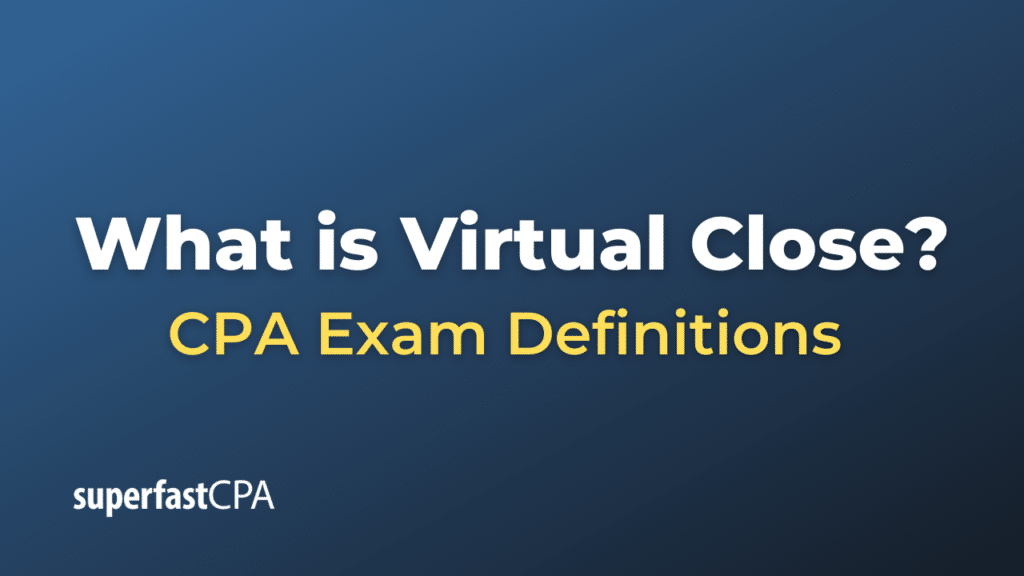Virtual Close
In the context of accounting, a “Virtual Close” refers to the ability to quickly close financial books and generate reports, often in real-time or near-real-time. This is in contrast to traditional month-end or year-end closing processes, which can be time-consuming and labor-intensive. The concept of a virtual close aims to make the accounting close cycle more efficient, leveraging technology to automate many of the steps involved.
Here are some key features of a virtual close in accounting:
- Automation: A significant amount of manual work related to data entry, reconciliation, and verification can be automated, reducing the potential for human error.
- Real-Time Data: A virtual close often leverages real-time data, enabling more accurate and timely financial reporting and analysis.
- Cloud Computing: Cloud-based accounting systems often facilitate the virtual close process by allowing multiple users to access and update financial data simultaneously from anywhere.
- Data Integration: Virtual close often involves the seamless integration of data from various sources, such as different departments or even different software systems.
- Compliance: Even though the process is automated and accelerated, it is designed to be in full compliance with accounting standards and regulations.
- Analysis and Decision-Making: With quicker closing times, companies can more rapidly analyze financial data and make informed business decisions.
- Scalability: A virtual close process is often more easily scalable, accommodating the needs of growing businesses without a proportional increase in time and labor costs.
- Transparency: Real-time reporting and dashboard features can offer stakeholders greater transparency into the financial status of the organization.
The idea is to shift from a lengthy, cumbersome, and periodic “batch” model of closing the books to a more continuous, streamlined, and real-time model. This can help businesses become more agile, meet reporting deadlines more comfortably, and provide more timely information to management for decision-making.
Example of Virtual Close
Here’s a simplified example to illustrate the concept of a virtual close in accounting.
Traditional Close:
Week 1-3 of the Month
- Various departments are collecting and preparing data.
- Invoices are being matched and reconciled.
Week 4
- Finance department receives all the data.
- Accountants spend days reconciling entries, matching transactions, and making adjustments.
- Any discrepancies need to be clarified, which often requires further back-and-forth communication.
Week 5
- Final reconciliation and report generation.
- Reports are reviewed for compliance and accuracy.
- Finally, financial statements are generated and released.
Virtual Close:
Continuous Throughout the Month
- Data from various departments is continuously fed into a centralized, cloud-based accounting system in real-time.
- Automation tools match and reconcile invoices as they come in.
- Real-time dashboards provide ongoing insights into financial metrics.
End of the Month
- The system automatically flags any discrepancies or issues that need human attention. Accountants resolve these promptly.
- Compliance checks are automated and run in the background.
First Day of the New Month
- Automated systems have already performed most of the close activities.
- Financial statements are generated almost immediately, reviewed quickly for any anomalies, and then released.
By utilizing real-time data entry, automation, and cloud computing, the virtual close approach streamlines the entire process, making it possible to close the books much faster than in the traditional model. This frees up time for more valuable activities like financial analysis and strategic planning.













